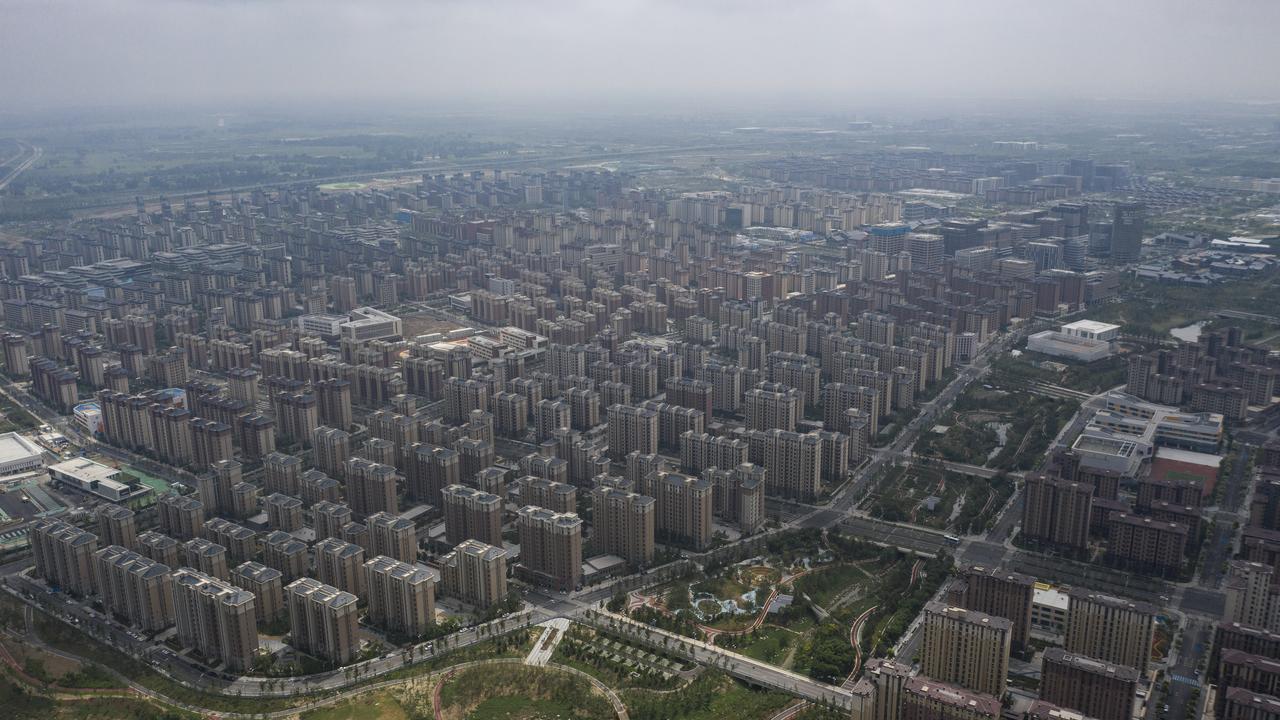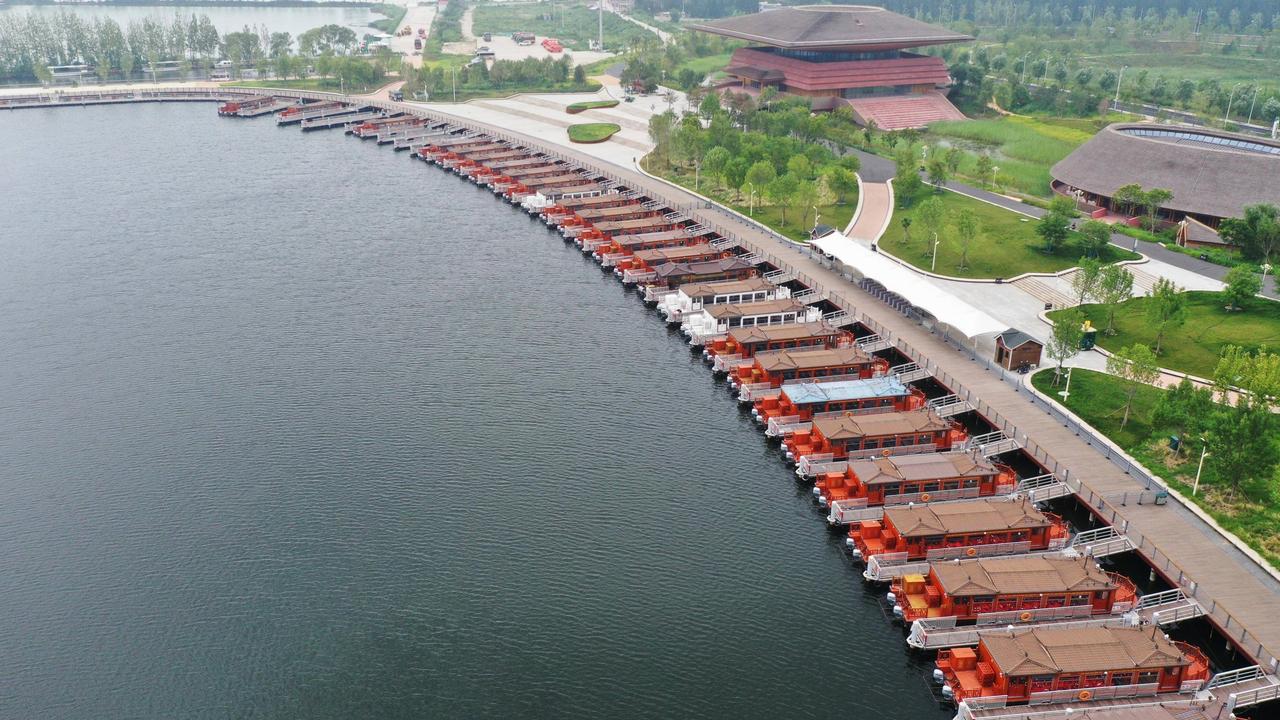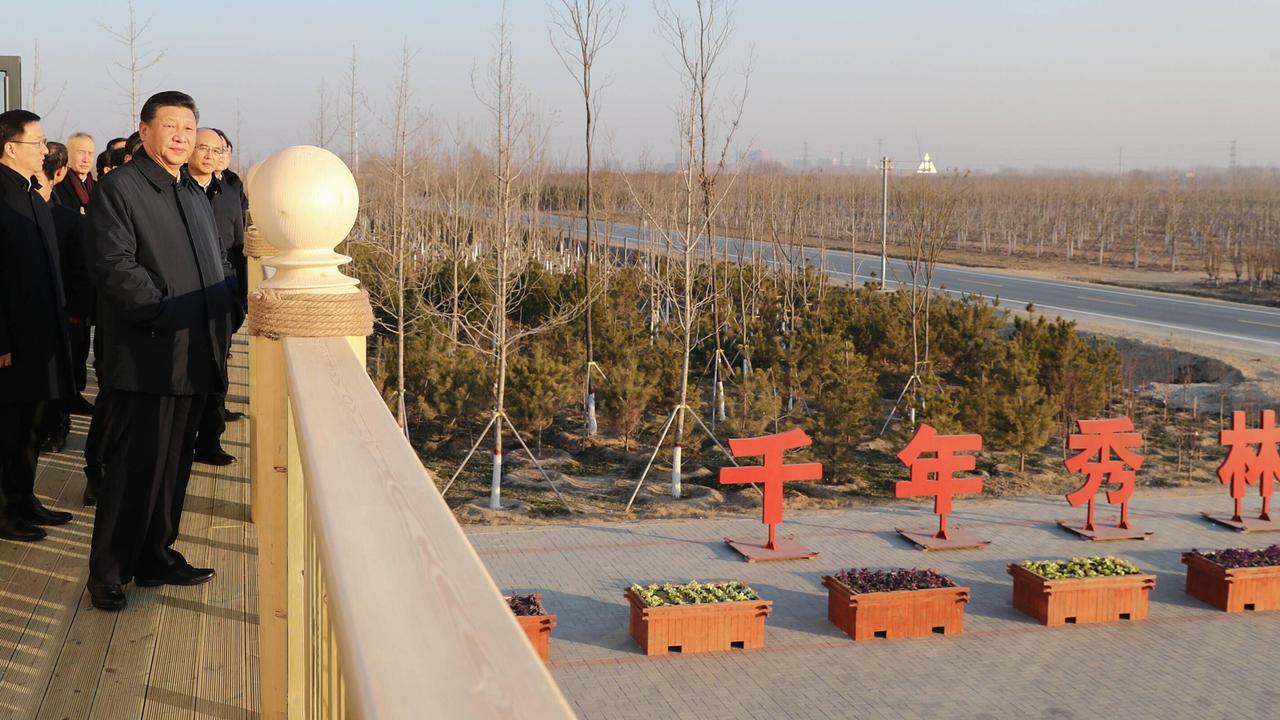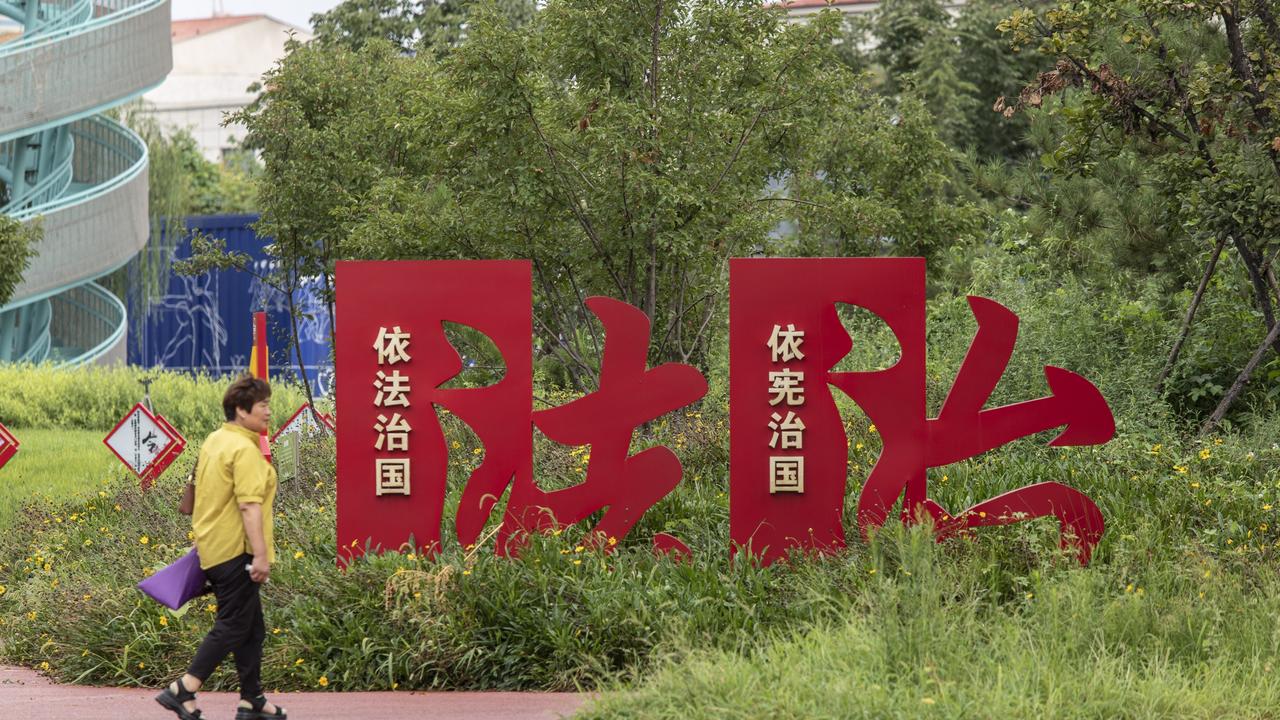Xi Jinping’s $128 billion new megacity Xiong’an is empty
China’s President Xi Jinping has spent $128 billion on a glittering new megacity — but the metropolis is virtually empty.

It’s a glittering city in a bowl. It’s a showcase of “ultimate Chinese modernisation”. It’s Chairman Xi Jinping’s $128 billion grand statement to the world. And it’s a ghost town.
The “Xiong’an New Area” project was dropped on a surprised Chinese Politburo and public on April Fool’s Day in 2017.
Xi called it his “personal initiative”.
He proclaimed it to be central to his “thousand-year plan of national significance”.
It arbitrarily redesigned three counties in Hebei Province, 100km southwest of Beijing, as an urban precinct.
The name Xiong’an is a combination of the Chinese words for “brave” and “peace”.
It even has a bit of Chairman Xi in it.
And it’s he who wants the 1680sq/km former lake to be “bigger than New York”.
He paints it as a “demonstration” of Chinese modernity, sustainability, and innovation.
His vision also foresees Beijing remaining the nation’s centre for politics, culture and international relations. All other “non-capital” and “non-essential” functions will be offloaded on Xiong’an to relieve congestion in the Communist Party’s seat of power.
But, there are problems.

Xiong’an is being built on a flood-prone swamp.
The logistics of its location - reportedly chosen by Xi himself - don’t make sense.
Seven years after construction started on the planned three-million-strong metropolis, only 170,000 people live there. Many of these have been relocated from compulsorily acquired local farms and villages as the “New Area” was already home to 1.4 million.
So far, China has spent $AU128 billion on the megaproject. That’s the equivalent of three Three Gorges Dams - China’s last great infrastructure icon.
But completing it is expected to take more than $AU570 billion. That’s 13 Three Gorges Dams.
“Xi … your timing is wrong, you’ve chosen the wrong place, and the people you are relying on to run the project are ill-suited to the task,” Chinese human rights dissident Xu Zhiyong wrote shortly before being jailed for “disrupting public order. “Yet, according to your brainstorm this is a Great Plan that will last a millennium!”

Deifying Xi
“President Xi was standing right here at this spot. Right here,” China’s state-controlled Global Times says Xiong’an Communist Party developer “vividly recalled” with “palpable excitement” after a recent visit by Chairman Xi. “We were very happy to witness this scene.”
Everything about Xiong’an is big. But with Chairman Xi Jinping’s characteristics.
Xi doesn’t like tall skyscrapers, for example.
“The Xiongan New Area Management Committee ordered ‘three no-builds’ in Xiongan—no high-rise buildings, no cement forests, no glass curtain walls,” urbanisation expert Andrew Stokols writes in Foreign Policy.
“Xiongan’s design also infuses elements of traditional Chinese culture into modern architecture, reflecting Xi’s emphasis on ‘cultural self-confidence’.”

A huge high-speed rail station connecting the project with Beijing was completed in 2020. Slabs of residential apartments are being thrown up. And beneath thousands of hectares of undeveloped land is a massive underground network of utility corridors and conduits.
Its beating heart is a massive data centre. This is being linked to every aspect of the city through a 5G network - enabling everything from traffic flow to power consumption to be controlled in real-time.
However, many of the future city’s much-touted features are yet to emerge.
For example, its vehicles were envisaged to be all self-driving. An extensive network of sensors, beacons and data relays has been established for this purpose.
But the AI-dependent technology is yet to catch up with Xi’s dream of “ultimate Chinese modernisation”.
‘New Xiong’an person’
“Xiong’an is Xi’s turn to build a signature city and, perhaps unsurprisingly, it is characterised both by a very high degree of centralisation and an obsession with project optics,” writes risk consultant Dan Macklin.
It is just the latest in a long history of vanity projects among China’s Communist Party chairmen. The most successful example is Shenzhen.

This megacity of 18 million people is located some 2000km south of Beijing. When Chairman Deng Xiaoping declared it a Special Economic Zone in 1980, it was little more than a market town surrounded by fishing villages.
But to Xi, Xiong’an is personal.
It’s supposed to be a living demonstration of his hallmark “Xi Jinping Thought on Communist Socialism With Chinese Characteristics”.
He’s published four volumes of speeches and musings on the subject. It’s compulsory Communist Party reading.
“This is reflected in the urban design guidelines of Xiong’an, which aim to “promote a higher standard of public service system, cultivate people with healthy minds, and create a ‘new Xiong’an person’ with noble character and artistic temperament, “a Communist Party document declares.
In practical terms, that means Xiong’an will be state-owned and run.
“Given the centrally led investment and personal commitment of Xi himself, it would be unwise to write off the Xiongan experiment,” Stokols argues. “The city is the latest example in China’s long history of using model cities to communicate political ideals, from the socialist oil city of Daqing in the 1950s to Deng’s Shenzhen as a testing zone of market reforms in the 1980s.”


Brave new world
Everything about Xiong’an flies in the face of millennia of urban experience.
“That Xiongan so clearly contradicts established urban principles will likely not trouble its state planners, who staunchly see the project within a Chinese context requiring its own unique (read: non-Western) model,” Macklin argues.
“In this sense, then, Xiong’an again reflects the broader direction in which Xi is taking China, toward a more inward state-led economy and away from globalist market-led capitalism. “
But can ideology override pragmatism?
Property trading is strictly regulated in Xiong’an. Authorised workers are allocated accommodation at standardised rental and repayment rates. Businesses are allocated what they need.
And market forces won’t influence the broader Xiong’an economy, either.
Communist Party media and proclamations state only hi-tech innovation firms will be permitted to set up shop there, alongside Party administrative centres. State-owned communications, energy and space enterprises have already been ordered to relocate their research and development units to emphasise this point.
But China, it seems, isn’t inspired.
“Your Xiong’an New Area is a long way from the sea, it lacks well-developed transportation links, it floats outside the cultural sphere of Beijing, and it is being built on marshes that are little more than a wasteland,” Xu told Xi in his open letter. “It is an extravagant construction project being pushed ahead despite the fact that it signifies a wilful squandering of hard-won resources accumulated on the back of the people’s labour.”

Decide first, think later
“Countless unpopular and half-down projects directed by Xi Jinping himself, including the zero-COVID campaign and the ghost city Xiongan, have not weakened his position as the supreme leader,” argues associate professor Jinghao Zhou in The Diplomat.
“Today, Xi’s legitimacy relies not only on economic performance but also on political control by propaganda, coercive force, and pyramidal organisation. Poor economic performance may damage Xi’s reputation, but it does not fundamentally harm the political regime.”
University of Michigan Sociology and International Studies academic Xiaohong Xu argues the Xiong’an project - along with the entire Belt and Road Initiative - encapsulates the ideology of Xi’s loudly proclaimed “common prosperity” campaign. Therefore it cannot be allowed to fail.
“The Xi administration … exhibits what can be called a “laobing (Original Guard) policy style”: quick, bold, ambitious, determined, abrasive, and often able to catch people by surprise—yet short on rigorous planning and monitoring of implementation,” he writes in a ChinaFile essay.
“Since 2012, this style, with its contempt for technical considerations, has been crucial to Xi’s increasing dominance, enabling him both to overcome systemic challenges from civil society and competing factions and to pre-empt pushback from technocrats.
“As a result, under Xi, rather than contributing to research, or recommending and designing policies, technocrats more often find themselves charged with executing or cleaning up after policies made without their input.”






